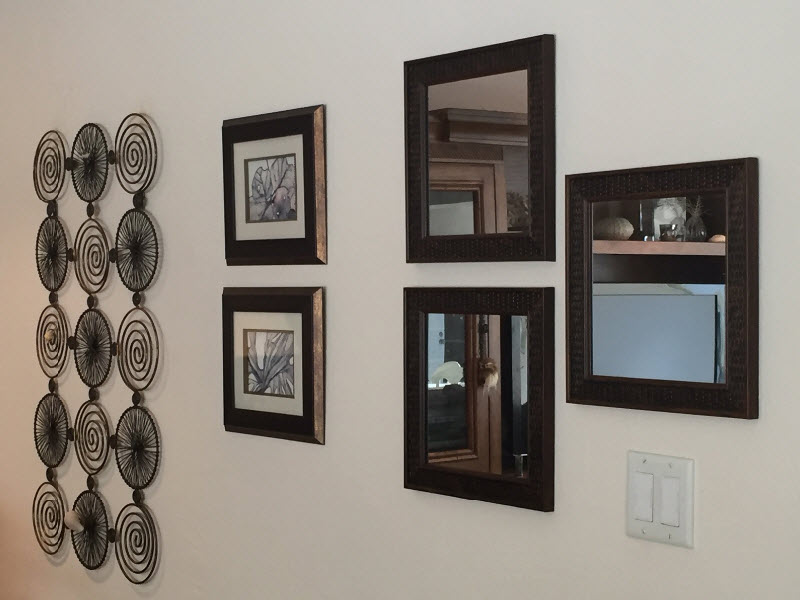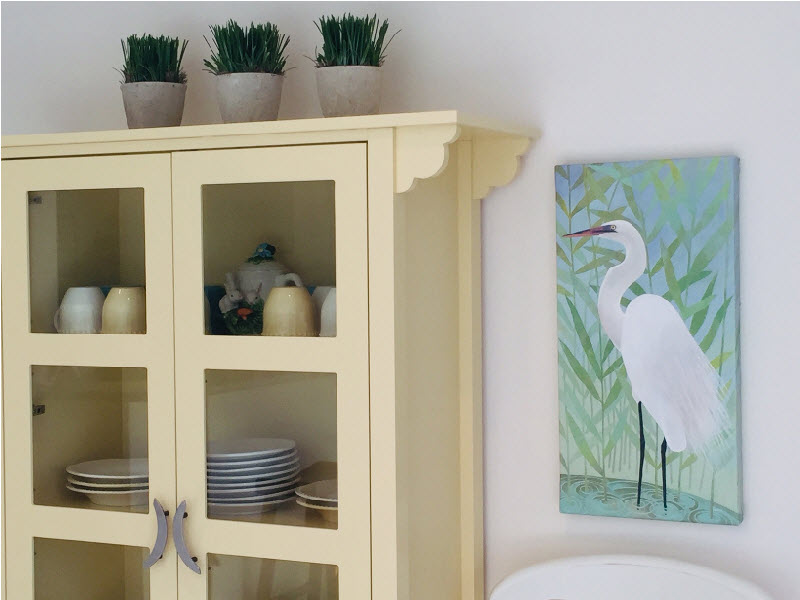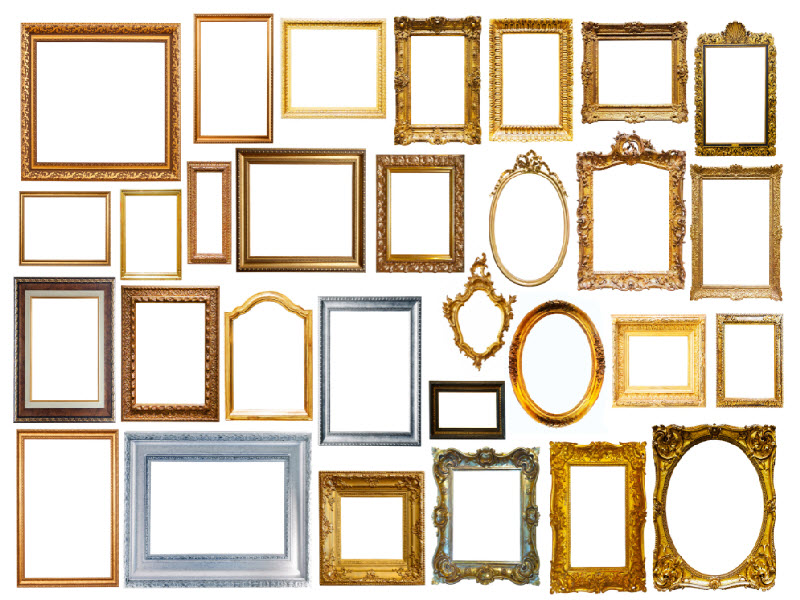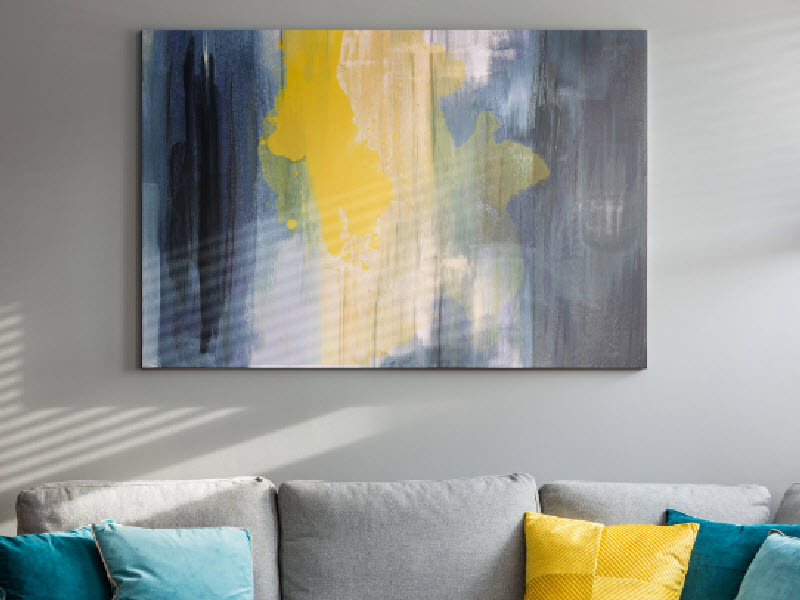Are you one of the many who procrastinate when it comes to hanging art? Maybe you’re not sure about where it should be positioned on the wall. Perhaps you don’t have confidence that a particular framed painting or photograph will look right in the space that you have in mind. Or maybe you know where you’d like to hang the piece, but you’re unsure about how best to frame it.
I often help clients select art and frames, and then install the items for them, too. Art is definitely one of the most important finishing touches that can personalize your home or office, and can be found and implemented at many different budget levels. But, for many people it can feel like there’s a roadblock preventing getting to the finishing line of actually putting up art.
Some clients call on me to hang art throughout their homes. One client had collected wonderful pieces over the years and had a sizable number of paintings and photos from travelling, but was hesitant to actually hang anything, so her walls were left bare. She was having her interior walls painted, so after helping her select new paint colors throughout the home and after the new paint job, I spent part of two days putting up art. I started by placing art in the rooms and near the walls that I felt would work best, confirmed locations with the client, and then went to work! The results were wonderful and helped make her home much more personalized, decorated and finished.
Here are some tips and tricks that I’m sharing for successful art installations:
Framing Art:
Framing can feature a couple of different approaches depending on the look that you’d like to achieve. For example, using a variety of different frames in several styles or finishes creates an eclectic look and supports the concept that you’ve built a collection over time. This is especially key in traditional or transitional interiors.
On the other hand, using similar or identical frames (for example, simple black frames) creates a tailored and contemporary appearance that lends itself to collections such as photographs of people or places, sports photos, or documents. This works well both in residential settings or commercial settings such as offices or lobbies.
Hanging Art:
In general, hang art at eye level, especially single items. On their own, clients often hang art too high and I often suggest placing it lower. No need to crane your neck to see your art.
Even if hanging things all at once, select a variety of sizes and images to create the sense that you’ve built a collection over time, unless you’re hanging something in a very specific collection that requires perfect symmetry. For example, I worked with a sports fan who framed prints of Sports Illustrated magazine covers. We framed everything in identical black frames and installed them in a nice symmetrical grid to make a strong statement.
If hanging a vertical group, hang the most prominent piece at eye level and build from there, with smaller pieces above or below the main item.
If hanging a horizontal group, select the item that will be the most prominent (usually a larger piece) and build from there. I generally space items about 2” from each other if hanging them side by side.
Buy or collect art or photos that have meaning to you, so that you feel or remember something special each and every time you see your art. Sometimes generic art can work too, but be sure you at least like what you select or connect with it in some way!
Place small items in appropriate spots so that they don’t look lost. A small frame looks great nestled next to a door frame, or between a lamp and a chair or sofa, as opposed to sitting in the middle of a wide wall, looking lonely.
Mirrors in decorative frames complement art very well and allow for some fun and whimsy. Various sized mirrors can be grouped together for a nice decorative touch.
Family photos work well in hallways, where you can start with a small group of images and then build on it as the years go by. Some people like to display family photos in more public areas like family rooms or kitchens, while others prefer family photos along a stairway or in a corridor leading to bedrooms, creating a more private feeling.
Measuring once, twice, even three times is key before hanging art to be sure it ends up exactly where it should be. If hanging items in identical frames, check the wiring or hardware on the backs of frames – sometimes frames are wired differently from one another even though they’re identical in size and appearance. Checking the hardware or wire can save from having unwanted holes in your walls.
Take your time and enjoy the process, and remember that interior designers can help you choose art and hang art very efficiently, which helps reduce “art – stress” for clients!

Framed art and mirrors make a great combination in a wide space

Regional or local art, in this case a painting of an egret, adds to the decor and reflects the client’s love for birds

An example of uniform frames used with photographic prints. A classic look!

Fun with frames – take your pick!

